This is the second half of John Schilling's two-part effortpost on SCUBA diving, originally written for Data Secrets Lox. The first part covered basic recreational diving, while this one looks at more advanced topics.
This time we’ll be focusing on technical and professional diving. Note that these aren’t strictly the same thing. “Technical diving” refers to anything beyond the limits of no-decompression open-cycle scuba diving. And there are amateurs who learn those skills for recreational purposes, e.g. visiting interesting or historically significant shipwrecks at 40-80 meters. There are also professionals who can do their jobs using nothing but recreational-grade scuba gear and techniques. But for our purposes, I’m just going to fold them both together into the broad category of stuff beyond ordinary recreational diving.
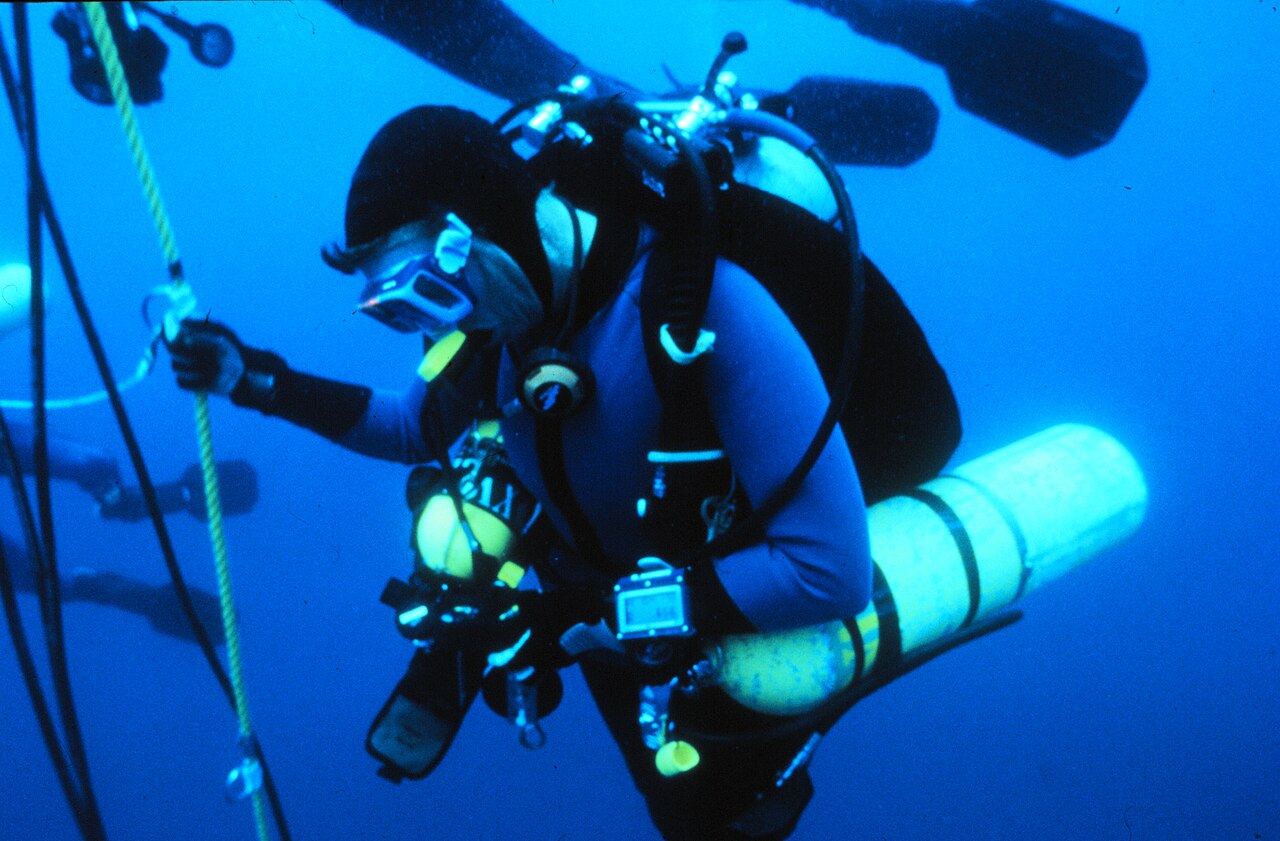
Most of this is going to be stuff that’s more difficult, more expensive, and more dangerous than ordinary recreational diving, but also more rewarding. Let’s start with the risks. I already listed all the things that could kill you in the course of a brief recreational dive to no more than forty meters, if you aren’t careful. Here’s a few more to worry about if you’re going really deep.
Oxygen toxicity won’t kill you at any depth within recreational limits, but is a factor in technical diving. Of course oxygen is toxic; it’s one of the most reactive, corrosive gasses known, responsible for one of the most catastrophic extinction events in prehistory, and any species that hasn’t specifically evolved to deal with it will react to oxygen the way we react to chlorine. But we’re evolved to deal with oxygen at 3 psia partial pressure, not 30. The first symptoms are neurological, including convulsions that lead rapidly to drowning seeing as how you’re already deep underwater. The rest of the symptoms don’t matter so much at that point.
This means diving deep requires changing your gas mix as you go. Anything with enough oxygen to keep you conscious and alert near the surface, say during the long decompression stop after a deep dive, risks killing you if you go below 70 meters (230’). Whatever it is you were breathing at the bottom, risks your passing out as you ascend (and then you drown). So you’ll need multiple tanks, and remember to switch air sources at the right time. Or a rebreather that lets you dynamically adjust the mixture from a tank of pure oxygen, which is more efficient but has more fiddly complexity to kill you if you screw up.
There’s also something called “compression arthralgia”, which is medicalese for “we’re not sure why, but your joints hurt if you dive too deep”. If you take it slow, this usually doesn’t show up until about 200 meters (650’), and it’s usually not crippling until some distance beyond that. And it seems to clear up with no long-term effects as you surface. It’s not well understood because it can’t really be studied in the lab, but it likely would limit ambient-pressure diving to a few hundred meters even if the breathing-gas issues were completely solved.
Another poorly understood, difficult to research issue is “dysbaric osteonecrosis”. Basically, too much deep diving causes your bone tissue to start dying, and this doesn’t get better when you go back to the surface. Probably caused by nitrogen bubbles in the tiny blood vessels that feed the bones, and using the most conservative decompression schedules seems to help. This is a career-limiting factor for professional deep divers.
Beyond that, nobody really knows because these factors alone limit how deep and how long people are willing to dive to find all the fascinating ways a human body can break down under (literal) extreme pressure. But all those Sci-Fi thrillers Hollywood likes to make about the crew of scientists or mining engineers or whatnot living and working in the abyssal depths are probably right out. The continental shelf is accessible to humans, and the upper margins of the slope, but the deep basins that make up most of the Earth’s seas might as well be the surface of Venus – to be viewed only through portholes or cameras, worked by robots, and if someone ever builds an armored suit to let a man walk on that surface it would likely be just a stunt for the sake of having done it.

Now for a cheat sheet on diving depths, much of it already covered last time
- 0-10 meters (35’): Decompression is not an issue, but typical scuba gear has air for maybe two hours
- 20 meters (65’): Limit for basic open-water recreational diving, for up to an hour if you’re good with air consumption
- 40 meters (130’): Limit for advanced recreational diving, but decompression limits kick in after about twelve minutes
- 100 meters (330’): Practical limit for technical diving with special gas mixes and mandatory decompression
- 180 meters (600’): Theoretical limit for “bailing out” of a submarine
- 200 meters (650’): Sunlight goes away; not much worth looking at even if you brought your own light
- 300 meters (1000’): Absolute limit for technical diving starting from sea level, practical limit for hard-suit diving
- 700 meters (2300’): Absolute limit for saturation diving from a pressurized habitat
- 1000 meters (3300’): Absolute limit for hard-suit diving with current technology, and really you should leave this one to the robots.
Next, the sort of gear you want to use if you want to go beyond the limits of normal recreational diving. Professionals do use a lot of the same stuff, usually paying extra for e.g. durability and reliability. But sometimes they need fundamentally different equipment.
The first and most basic piece of equipment is, whatever it is that you’re going to breathe. The record for breathing normal air at depth is about 155 meters (500’), and the guy who set it doesn’t remember doing so because that’s about the thirteen-martini level for nitrogen narcosis. This was basically a stunt, and nobody should ever do it again For a number of reasons, you really ought to be breathing something other than air if you’re going below 40-60 meters.
One form of mixed-gas diving is fairly common in the recreational world – “Nitrox” is a nitrogen-oxygen blend with less nitrogen than sea-level air. This means less dissolved nitrogen, less nitrogen narcosis, and a greater margin against decompression sickness. Allows longer dives at moderate depths. However, because less nitrogen means more oxygen and oxygen toxicity is a thing, absolute maximum diving depth is reduced. If you want to go deeper, you need to reduce the oxygen content, and you need to replace some or all of the nitrogen with something else. Most common is trimix, a combination of oxygen, nitrogen, and helium tailored to your planned dive profile. For extreme depths, you may need to go with premixed hydrogen and oxygen – which sounds like it should be dangerously explosive, but isn’t because the oxygen content is only 2% or so (which at 150 psia or 10 bars is plenty). And as noted in the discussion of oxygen toxicity, there is no single gas mix that is safe across the full 0-70 meter range, so be prepared to change the mix along the way.
For delivering this not-quite-air, open-cycle SCUBA apparatus is still used more often than not because it’s simple and reliable. But for deep and/or prolonged dives, multiple-tank rigs are the norm. Often with the ability to replace tanks while under water. And, of course, you’ll want the most durable and reliable versions possible when doing the sort of diving where you can’t always just flee to the surface when things go wrong.
One common variation in professional diving is to use a full face mask with integrated regulator, rather than a separate mask for just eyes+nose and a mouthpiece regulator. Among other things, this lets you speak normally, and if you are tethered to the surface a voice link to your support team is extremely useful.
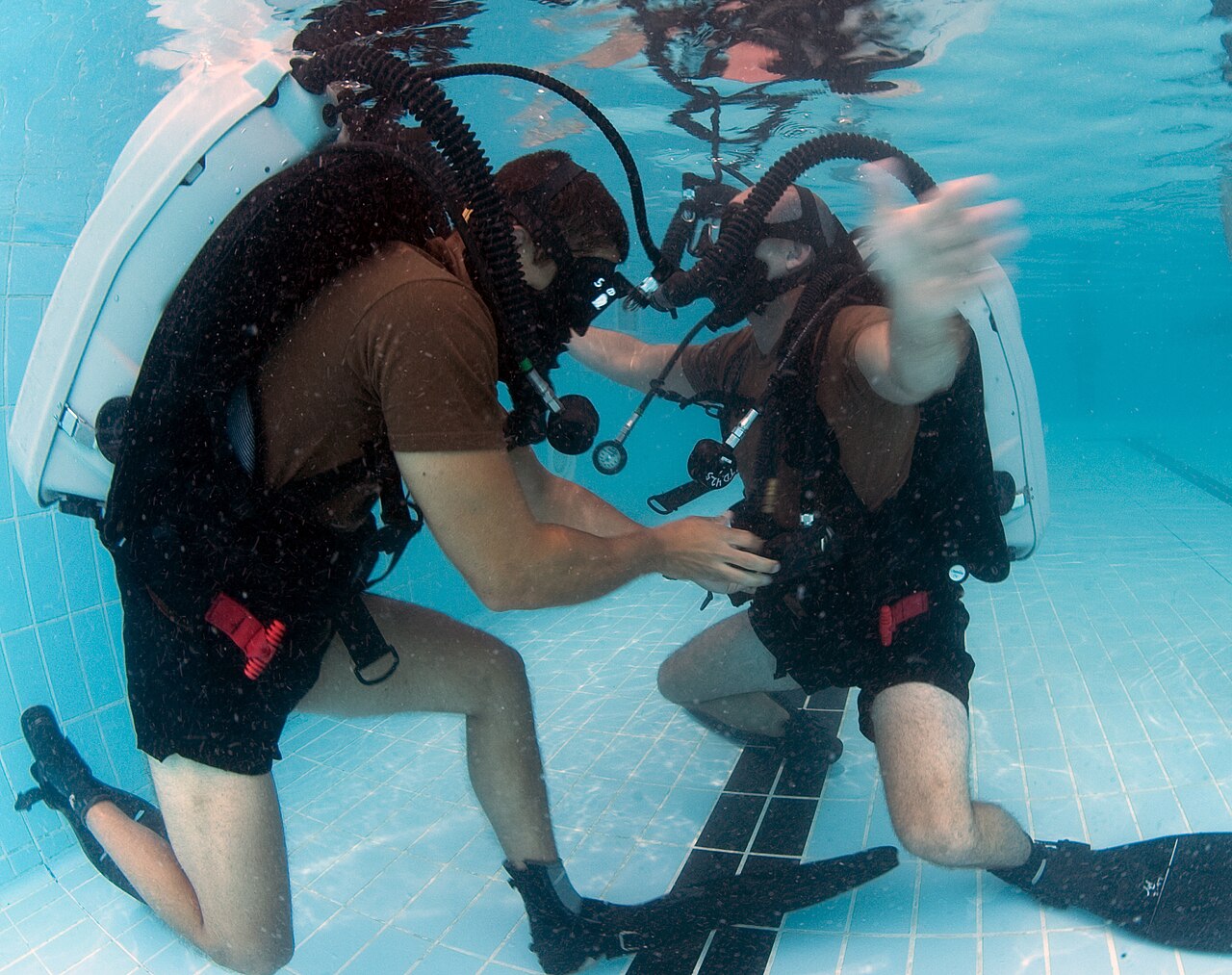
But you can do away with compressed-air tanks altogether and use a rebreather. These actually predate scuba gear by a few years, but were quickly relegated to specialist roles because they are complex and expensive and those are bad things. A closed-cycle rebreather has two tanks, one of mixed gas and one of pure oxygen, and a canister of carbon-dioxide absorbing material. When you exhale, the air flows through the CO2 absorber, and enough oxygen and/or mixed gas is introduced to make up the difference. This can increase diving endurance by an order of magnitude or so, and it doesn’t make bubbles except during ascent (when gas in the lines and dead spaces expands and has to be vented). There are also semi-closed-cycle rebreathers that use only a single tank of e.g. nitrox; these are less efficient because they can only make up lost oxygen by introducing mixed gas which is only partially oxygen, and they make more bubbles for the same reason, but they still give you 3-4 times the endurance of scuba gear and they do make noticeably less bubbles. But they are still much more expensive and complicated than open-cycle scuba gear.
For particularly cold water, or for moderately cold water and people who really hate the cold, there are watertight "drysuits". Warmer and more comfortable than wetsuits. But they’re also more expensive, and they require more training because of the impact on buoyancy control – not being filled with water, they have air on the inside as well, which will expand and contract with depth changes and if you’re not careful about controlling that you can wind up e.g. suspended upside-down on the sea floor by your balloonified legs and ballasted torso. You can get drysuits with fully-enclosed helmets, or just go for a good neck seal and conventional scuba gear (including a wetsuit-style hood) above. These are at the border between recreational and professional diving; on a dive boat off the California coast you’ll typically find one or two cold-sensitive divers using the unhelmeted versions.

Then there are diver propulsion devices and/or vehicles. Usually these are handheld battery-and-propeller units good for maybe three knots for two hours. You don’t exert yourself while using them, so your air might actually last two hours if you keep it shallow. For greater performance, there are “chariot” style vehicles, basically open-cockpit minisubs for 1-4 people. These might get up to 5-6 knots and last as long as 8-10 hours – with their own air supply so the diver doesn’t have to use his tanks until he debarks. They can also carry somewhat better navigational gear than a diver’s handheld compass, but there are limits to what sort of precision you can really achieve underwater.
But these, especially the larger ones, are cumbersome to handle above water. Most of the ocean is boring, and you probably already have a boat to take you to where you need to be before you dive in, so why do you need underwater propulsion? The smaller DPVs are common in advanced recreational diving, where they allow for a greater range of sightseeing on a single dive. There is some professional use when someone needs to survey a large area, e.g. a length of pipeline. The “chariots” are mostly for the military, who often can’t take a surface boat all the way to their destination. And for rich people who like toys.

For applications where swimming is not required and simply walking on the sea floor, standard diving dress still sees some use. This is basically just a heavy-duty drysuit with a helmet receiving air from a compressor on the surface. I’m not terribly familiar with these, and don’t have much more to say about them. There are also hardsuits that maintain sea-level atmospheric pressure on the interior. These have been tested to 1000 meters or so, but most operational use has been at 300m or less. Mostly past tense, because they are extremely cumbersome and have been replaced in many applications by remotely-operated underwater vehicles, but they do have their niche.
And, whatever it is you’re planning to actually do under water, if it goes beyond looking at things there’s almost certainly a range of specialized tools for that.
Now for the training and techniques:
First up is decompression diving. If you’re willing to accept decompression stops being mandatory, you can go deeper than 40 meters (130’) and you can stay down longer at whatever depth you do reach. The nitrogen you absorbed diving at fifty meters or more, will come out of solution dangerously fast at the surface but at a tolerably slow rate at intermediate pressures, so spend some time doing that. The decompression stops don’t need to be particularly onerous – fifteen minutes at five meters may be enough – but you have to do them even in an emergency and even if you’ve stupidly run short of air. So, less margin for error. And you have to plan the decompression stops, which means lots more math. You also have to be really good at buoyancy control, because fifteen minutes at five meters doesn’t mean “oops, I overinflated my BCD and floated to the surface without noticing”. It may help if you e.g. hang a weighted air tank with a spare regulator five or ten meters below your boat, giving you a guaranteed air supply at a fixed depth, but now your underwater navigation has to be good enough to find it while underwater and possibly in low visibility. These techniques will let you dive to about 60 meters (200’) with useful bottom times.
Below 60 meters, you’re going to need to use mixed gas, which we’ve already talked about. But this isn’t just a matter of telling the service-station attendant to fill the tank with premium instead of regular; there’s a range of new skills to learn associated with the extra complexity. Particularly when you combine mixed-gas with decompression diving. Ideally, you apply these skills up front when you’re planning the dive to minimize the complexity during execution. Planning a deep technical dive is serious business, and most of that is planning for safety. But even so, you’ve greatly increased the number of stupid mistakes that can kill you, and at this depth you don’t have “float to the surface and sort it out there” as a fallback.
Rebreather diving is another technical specialty requiring advanced training and techniques, because you’re adding still more failure modes. An open-cycle scuba system will either feed you whatever gas you filled the tank with at the surface, or nothing at all – and you’ll notice immediately if your regulator isn’t giving you anything to breathe. Rebreathers allow dynamically adjusting the gas mix, and you probably won’t notice that the air you’re breathing isn’t the right mix for the depth. A Nobel Prize-winning physicist managed to kill himself in ten feet of water, by skipping a step in his pre-dive rebreather checklist.
The next step is saturation diving where you can stay down as long as you like even at great depth because you accept that your bloodstream and body tissues are going to be saturated with nitrogen at high partial pressure. Which you can get rid of through staged decompression at intermediate depths, but now you’re talking about hours or days of decompression. Since it is impractical to do this while free-swimming, saturation diving is usually done from a pressurized chamber at the surface. A small diving bell is used to take divers to and from the bottom at constant pressure. Often the dive team will live for weeks in the surface habitat at seafloor pressure, being shuttled by bell to and from the sea floor for work shifts, and then undergoing decompression in the surface chamber. Obviously this is well out of the realm of recreational diving. The absolute limit for saturation diving is about 700 meters, but most saturation diving is done in the 30-100m range to take advantage of the very long bottom times allowed.
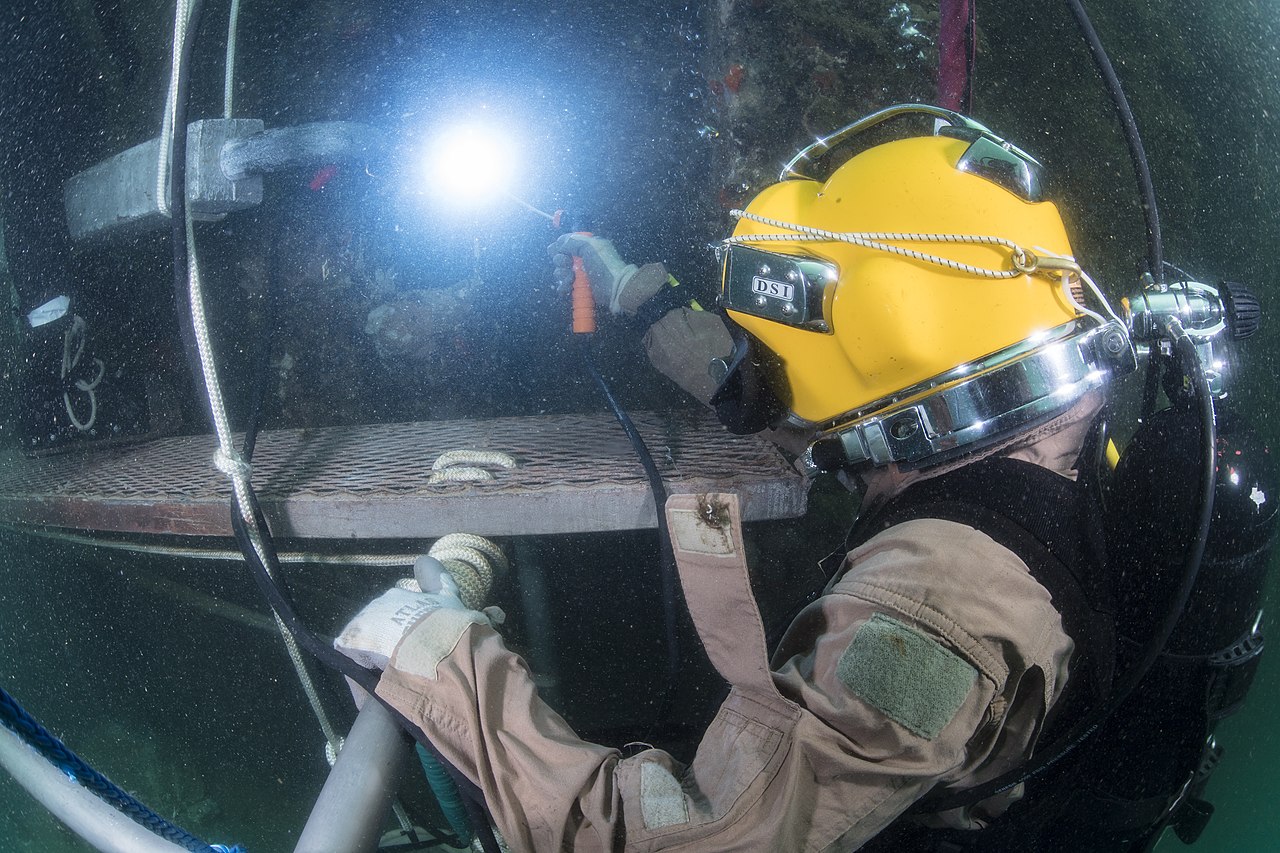
We’ve talked about technical diving mostly in terms of depth and duration, but there are other factors. Wreck or cave diving involving complex and/or unexplored sites generally falls into the technical-diving realm, requiring some specialized tools and much specialized training. Diving in extremely low visibility, e.g. feeling around the muddy bottom of an urban river for dead bodies and discarded murder weapons, ditto. And any sort of construction or repair work requiring tools more complicated than a crowbar is going to fall into this category, particularly things like underwater welding. Yes, underwater welding is a thing.
So what do the professionals do with all of this?
Probably the biggest category of commercial diving is underwater construction and maintenance, e.g. of offshore oil rigs. If you’ve read this far, you’ll understand why people try really hard to do as much as possible on the surface and just drop the finished product onto the sea floor. But some degree of on-site assembly and inspection is often unavoidable, likewise ongoing maintenance. Robots can do some of the inspection work, but I don’t think anyone has built a robot that can wrench open a stuck valve in the open sea yet. Also, “underwater” doesn’t just mean the sea floor. Below-waterline inspection and repair of ships is a pretty big deal, and while diving is cumbersome, so is drydocking a ship. So being able to go down five or ten meters for an hour or so is quite helpful, and you can do that with recreational-grade scuba gear. As we go inland, dams and hydroelectric power plants have underwater inspection and maintenance requirements. And as an extreme example, any time you see a large municipal water tower rising a hundred feet above the landscape, know that there will occasionally be divers working inside to keep it clean and leak-tight.

Salvage operations can be folded into “underwater repair”, but it’s really a specialty in its own right. Recreational diving techniques are suitable for picking up little (<100 kg) things sitting on the ocean floor, but anything resembling refloating a ship or even retrieving big heavy things is going to require a large team of divers with the right training and tools. Also, much of what you’re trying to salvage will be buried under (or filled with) mud and sand, and the moment you try to move any of that your visibility goes to about zero.
Hazmat cleanup overlaps both underwater maintenance (a pipeline is leaking something nasty) and salvage (those drums of nastiness can’t stay on the sea floor) diving, but again is its own specialty. This sort of diving is almost always done in full drysuits, for obvious reasons.
There’s still a whole lot of research diving to be done, mostly in the area of cataloging and monitoring undersea life. Remember the part in the last post where I said that a pair of divers might explore a whole square kilometer of shallow water in a long day? Lots of the ocean is still very poorly explored, and we don’t know what lives there. And the places that have been explored, keep changing. Underwater archaeology also fits into this category. There’s lots of collaboration with recreational divers in this area, because it’s easier for a small group of pros to teach a lot of amateurs how to recognize and count fish (or whatever) than to do it all themselves.

Diving to harvest pearls, abalone, etc, is a serious professional activity in some areas. Fish and lobster are normally left to nets and traps respectively, but many divers will hunt these recreationally and occasionally graduate to semi-professional status. Likewise collecting pretty seashells.
Hollywood, of course, has plenty of use for professional divers to stage and film exciting underwater action sequences. Even the news media sometimes gets in on this action. Almost all of this is done with recreational-diving tools and techniques, because it’s cheaper and the viewers can’t tell the difference between five meters and fifty. The educated viewer can tell the difference between a competent diver and someone who doesn’t have a clue and probably had to be rescued by the pros in the first five takes; sadly most Hollywood Movie Stars fall into the latter category. A particularly dishonorable mention goes to For Your Eyes Only, a diving-intensive Bond flick where they cast as their Bond Girl a model/actress who not only couldn’t dive but couldn’t even swim, and had to do all her scenes on a dry stage and made to look underwater-y in post-production special effects. But they’ll usually at least try to film underwater, with some quick training for closeup shots with the principle cast and with professional stunt divers wherever possible. And underwater cameramen, and rescue divers to keep the expensive actors from killing themselves. There were apparently some very close calls filming James Cameron’s The Abyss.
Police and other first-responder organizations will often have a few trained divers on staff, for occasional rescue work (little Timmy fell down a well and is now trapped in an underwater air pocket) and underwater crimefighting. Or crimesolving at least; very few crimes are committed under water, but lots of evidence winds up there. The Los Angeles Sheriff’s Department is particularly capable in this area, and I suspect the same is true in other areas with an extensive coastal tourism industry. And of course the Coast Guard has divers in a wide range of roles.
Then there’s the military. The boring part first: Most military diving falls into the underwater construction and maintenance area. Lots of military hardware lives in the water, and it’s a pain to haul it out every time it needs fixing. Oh, and that clever bit you thought of where you have a diver sneak into the enemy naval base and plant tracking beacons on the hulls of all their ships and submarines? Yeah, they thought of that too, and they check. Regularly. That keeps quite a few military divers gainfully employed.1
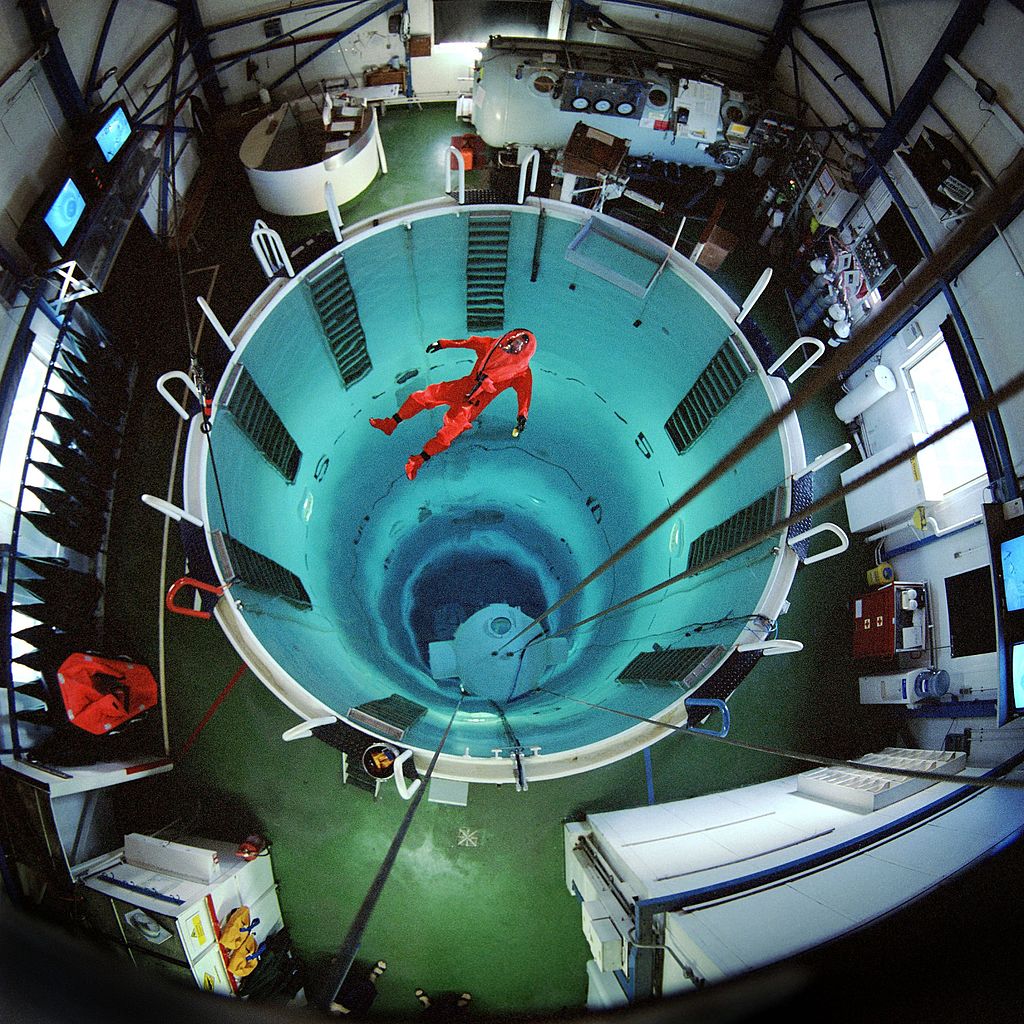
One sort of diving the military hopes to never do, is escaping from a submarine. Ideally, if you have to rescue people from a submarine you use another submarine designed for that purpose, and no one even gets wet. But it is possible to swim to the surface, from surprising depths, and navies which are serious about submarines train for this. Most of them also provide them with some sort of escape gear, but the main value of this is that A: it prevents cold water from hitting the submariner’s face and triggering the “must hold my breath no matter what” reflex, and B: it serves as an exposure suit and life vest when they’re floating on the surface.
To get to the surface, all you really need to do is get out of the submarine, fast, and then just swim upwards while blowing bubbles all the way. You can do that naked if you have to. You have to get out of the submarine fast because of decompression issues. The inside of the submarine is at roughly sea-level pressure, so you start with no excess nitrogen in your blood, but every breath you take in the lockout chamber you’re using to escape into the deep adds a dose of high-pressure nitrogen, and you’re not going to be able to stop for a decompression interval. And there’s no point in bringing any sort of air supply (except to avoid cold-wet-face panic), because after even one breath in the lockout chamber you’re going to have a lungful of compressed air that you’ll be exhaling continuously as you ascend. Or maybe you won’t exhale continuously, in which case your lungs explode. So it’s kind of important to train for this.
The Royal Navy has established procedures for this sort of self-escape, with or without equipment, from depths down to 600 feet (183 meters). The ascent takes about four minutes. You start with the equivalent of twenty normal lungfuls of compressed air, so running out of oxygen isn’t a problem. Ability to clear CO2 accumulation is marginal, as is the ability to avoid decompression problems with even the fastest plausible escape. And there’s a good chance you’ll rupture your eardrums. But it beats slow, certain death in an iron coffin. It’s been demonstrated from full depth once, by a team of Royal Navy divers in 1987. Everybody lived, but some of them spent enough time in the hospital that nobody wants to repeat the demonstration. Aspiring submariners have traditionally had to demonstrate this from 30-40 meters at least once, though the United States Navy has discontinued the practice.
Also on the “let’s not ever have to do this” list is underwater ordnance disposal. And, increasingly, they don’t have to because they can send a robot to plant a small explody thing next to the menacing big explody thing. But in the olden days, the only good way to clear a bottom mine was to send a diver out to deal with it. And even now, there are cases where simply blowing up the explosive hazard in place is not an option. For example, warship designers usually try to put the ammunition magazines below the water line, for good and obvious reasons. What happens if the ship takes a waterline hit anyway, and doesn’t promptly sink? Now there’s a whole lot of underwater ordnance, on a ship you’d really like to not have explode.
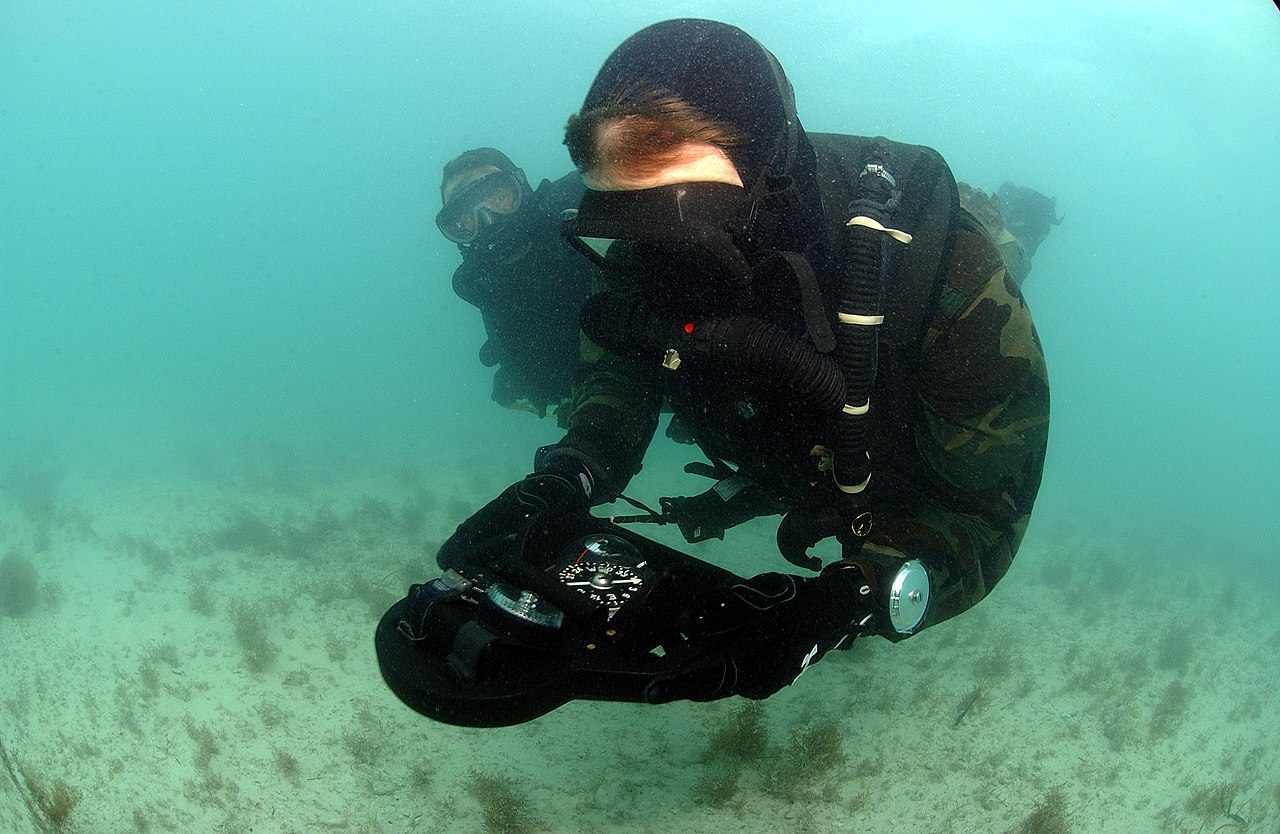
But you’re probably more interested in the sneaky stuff. Having divers infiltrate unseen into enemy territory is an obvious application. If what you’re interested in is landing on an enemy beach, whether to reconnoiter and clear that beach for an invasion or to operate further inland, that’s not too hard. If you can get a small boat or maybe submarine within a mile of the shore undetected – and it takes a very close eye over a lot of coast to prevent that on a moonless night – ordinary scuba technique will suffice to get your team on the beach reasonably close to where they want to be. If you need to start farther out, you’ll need some sort of diver propulsion vehicle; the military versions have pretty serious capabilities. Or you can parachute into the ocean while wearing diving gear (though parachute plus dive gear plus weapons and kit might be a bit much).
Recovery, is a trickier matter because of the difficulty of underwater navigation. If your plan is to swim a mile out to sea and rendezvous with a boat or submarine, you’ll probably never get close enough to see it. In the days when only elite military forces had night-vision technology, you could put an infrared beacon on your recovery boat, but that’s an increasingly tricky proposition. The better military diver-propulsion vehicles probably have inertial navigation systems, but the details are of course classified. Note that even inertial navigation is marginal where the mission is to rendezvous with +/- 100 meter precision many hours in the future.
If the plan is to sneak into an enemy naval base to spy on or sabotage their ships, things become harder still. You almost certainly can’t stage your insertion platform a mile offshore, so diver propulsion vehicles are a must. Usually very substantial ones, especially if you’re planning to bring enough explosives to sink a warship. The WWII standard was basically an electric torpedo modified with a very slow speed setting and a couple of seats for divers; modern versions are purpose-built but similar in concept. Rebreathers are of course a must, because beachwatchers might not notice a bubble stream but people watching naval harbors definitely will. The harbor will likely be defended, by nets if nothing else. And recovery will be similarly complicated by the larger standoff distances.
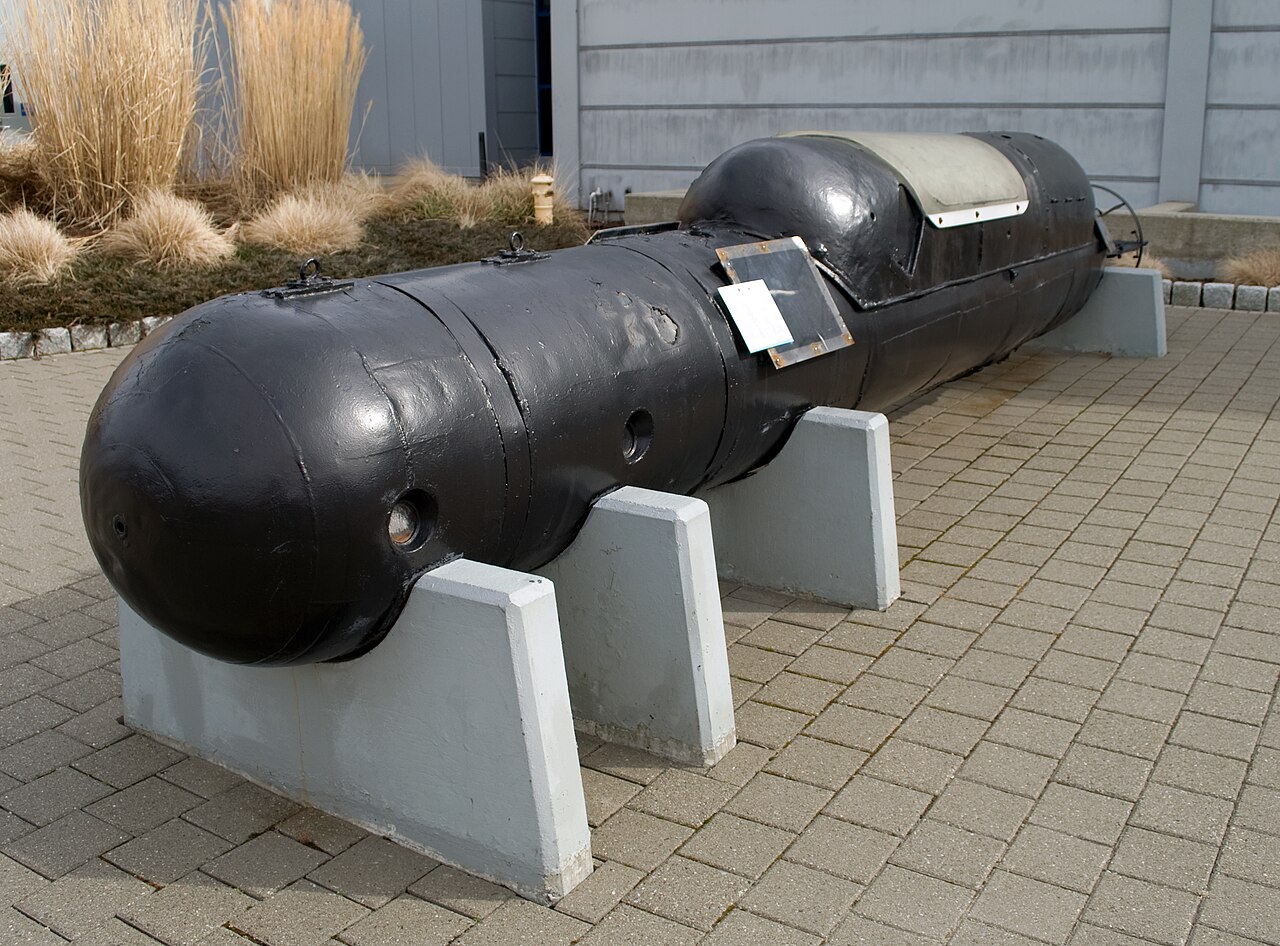
Probably the best-case scenario for underwater sabotage was the Italian Decima Flottiglia MAS in World War II. Their equipment wasn’t as polished as a modern SEAL team, but they had pretty much all the gear I’ve just described in a crude but useful form, and they faced a completely unprepared enemy. For about a year, the Royal Navy could only ever deploy two useful combat divers at a time in the Mediterranean, because they had only two sets of swim fins in all the theatre. And they had those only because they captured them from Italian combat divers. Italy was well ahead of the curve on this.
So, what was the track record for the first generation of modern combat divers, against an enemy that had no idea what they were up against? Out of 17 operations intended to destroy enemy ships in port,
- 3 failed to reach the deployment area because of enemy action
- 2 turned back due to technical difficulties with their gear
- 2 failed to reach the target due to navigational error
- 1 was cancelled due to weather
- 1 was engaged and destroyed by enemy harbor defenses
- 8 succeeded in reaching their assigned target.
The successful operations sank or severely damaged two battleships,2 five tankers, and thirteen freighters.
So, just under a fifty percent success rate when it comes to sinking something. Only about five percent when it comes to sinking enemy warships, because underwater navigation and target recognition are hard; mostly you’re just attacking targets of opportunity. And, even the successful operations had a better than 20% casualty rate. A 20% chance of losing an elite special operations team vs a 5% chance of sinking an enemy warship, which will be refloated and repaired because you sank it in a harbor, doesn’t make for a war-winning wonder weapon.
On the other hand, the Decima Flottiglia MAS sank more tonnage of enemy warships than did the entire Italian surface fleet, so that’s something.
Nobody else has ever achieved anything like this level of success. And, now that everybody understands the game, it is unlikely that anyone ever will. Trying to sneak into a defended harbor underwater isn’t quite a suicide mission, but it’s very high risk and low expected reward.
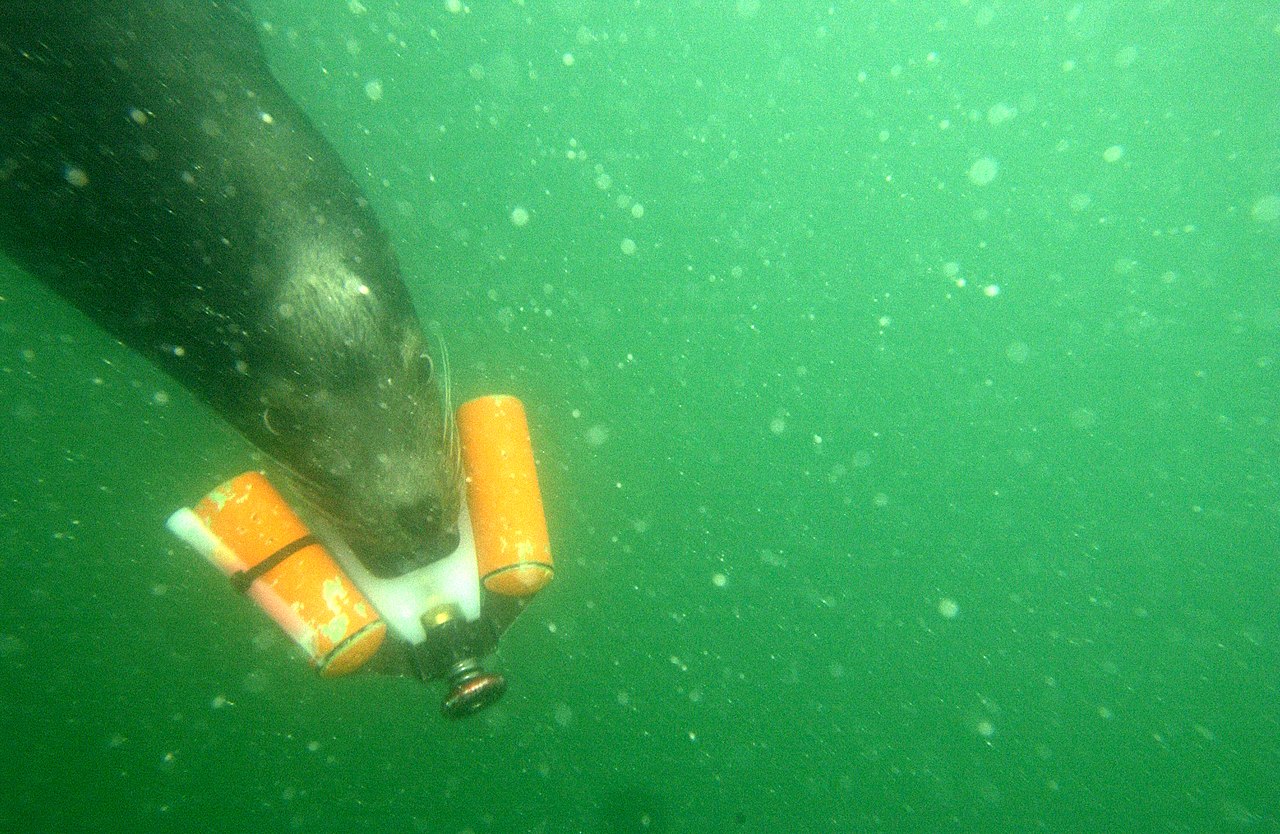
Finally, for all you James Bond fans, actual underwater combat. And I’m pretty sure the amount of lethal diver-on-diver combat on the silver screen greatly exceeds that in reality. Possibly even if we only count literal James Bond films. But it is possible, most obviously with the dive knives and spearguns common to recreational divers, but also with specialized firearms and the like. Really, though, it takes two to make a fight, and the defender generally takes the simpler option of nets, high-frequency sonar, and if necessary grenade fishing for scuba divers. Which leaves underwater combat for the situations that don’t merit a lethal response, e.g. dealing with peace protesters who thought it would be oh so clever to break out their recreational scuba gear and do some petty sabotage on a warship; those squares in the Navy will never see it coming. Which, yes they will, and you’ll never see their diver until he’s ripped your mask off from behind and there’s nothing for you to do but blunder around blindly until you give up and surface. If you do see him, he’s still trained for that and you haven’t. There are also non-lethal(ish) acoustic weapons designed for this sort of thing, details mostly classified. Also a few marine mammals that have been trained for it – as with dogs, it’s really fun to play with the ones who are playfully inclined, but hand-to-hand (well, hand-to-teeth) combat with the ones trained to defend someone else’s property is not going to go in your favor.
So that’s it for this edition of fun and profit under water. If you’ve been following, the score card is: Fun, yes, lots of it. Profit, plenty in absolute terms but it’s hard work and nowhere near a license to print money no matter how clever you are. Winning wars, not so much now that everybody knows how the underwater game is played – but you do have to play or you lose by default. The vast majority of the fun comes from looking at neat stuff, and the vast majority of the profit (or military advantage) comes from boringly utilitarian stuff like maintenance of underwater infrastructure.
1 bean: To the point that pretty much every major warship has a couple of people trained as divers, who can be deployed if, say, a cable gets wrapped around a propeller or something. They're also the ones who get sent in if there's damage and a compartment full of water needs to be sealed so it can be pumped out. ⇑
2 bean: This would be Queen Elizabeth and Valiant, both severely damaged. Many sources report them as sunk and later refloated, but R.A. Burt has details on anchoring depth which confirm that neither actually touched bottom. ⇑

Comments
HL Sutton's book Covert Shores indicated there was a myth that Soviet and South African divers once fought underwater but there's no actual evidence of it happening anywhere for the same reason you note.
Also, regarding the James Bond example in Thunderball, something amusing is that earlier in the same film we actually do see grenade fishing when Bond is doing recon of the villain's ship. It's just that it's a rather anti-climactic ending to use that on a larger scale instead of having a neat but stupid underwater battle using underwater filing techniques that were somewhat new for the era. I also found it neat that James Bond's allies in that movie are actually the Coast Guard rather than Navy Seals. All of the naval vessels at the end also seem to be the Coast Guard (you can see the CG markings on some of them), but this was done before the orange on white rebranding so they looked the same shade of gray that Navy ships ahd.
@Adam: There's also the "Crabb Affair", where a British diver named Lionel Crabbe disappeared while attempting a covert underwater inspection of the Soviet cruiser "Ordzhonikidze". The ship was in a British port on a diplomatic mission at the time, so there was a great deal of both controversy and secrecy and we still don't know for sure what happened. It's unambiguous that he went into the water and never came back, but beyond that it's all rumor and some of the rumors involve knife-wielding Russian frogmen.
Beyond that, more rumors from around the world, and clearly some navies are training and preparing for diver-on-diver combat, but it doesn't seem to be a thing that happens with any regularity in either hot or cold wars.
Regarding the Nobel physicists that drowned:
"He by-passed two pre-dive checklists for his Cis-Lunar MK-5P Mixed Gas rebreather and entered the spring basin without his dive buddy from the National Geographic Society. Kendall missed turning the oxygen supply to his rebreather and lost consciousness and drowned."
So 2 major sins: not doing all the checks and diving without a buddy. However, the cause of death seems to be a source of some controversy:
https://www.tampabay.com/archive/1999/02/19/authorities-say-physicist-s-death-not-caused-by-dive/
"The autopsy revealed a physiological issue that led to his disregarding the protocols."